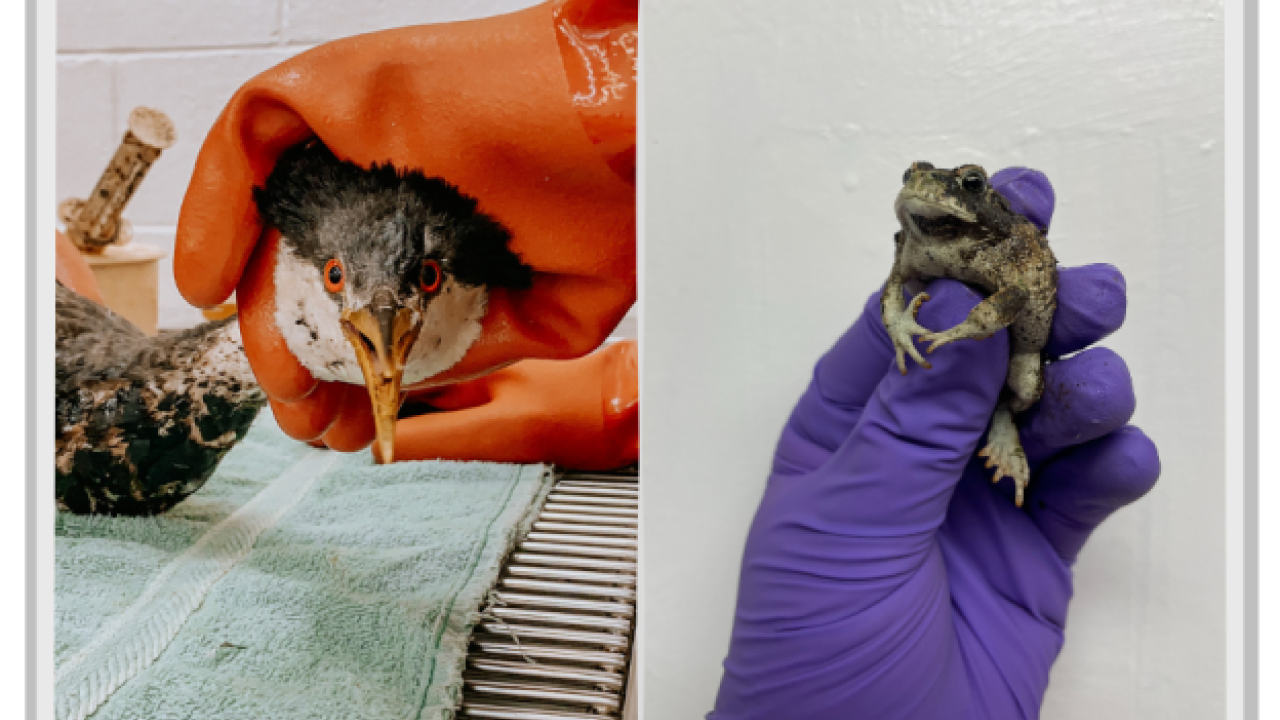
Slippery Situations
The Wild Differences Between Rehabbing an Oiled Toad and an Oiled Grebe
Picture this: a young Western toad, its skin caked with sticky oil and dirt, is hopping through an oiled creek bed. A few counties away, a Western grebe - a fully aquatic bird - has beached herself, her feathers clumped with thick crude oil.
Two animals impacted by two different oil spills…but when it comes to rehabilitation, these two creatures might as well be from different planets.
Let’s take a fun and educational deep dive into the wildly different world of rehabbing an oiled toad vs. an oiled grebe - two animals with very different biology, behaviors, and needs.
Meet the Toad
Toads are amphibians, which means their skin is semi-permeable - it absorbs water and toxins. That’s like having your lungs on your skin. Oil? BAD NEWS.
Oiled Toad Rehab Overview:
Step 1: Evaluation
Toads are small and relatively fragile. Before any cleaning happens, they need to be assessed for injuries. Though they are less prone to dehydration than amphibians with thinner skin, toads are susceptible to overheating and becoming too cold. Oil exposure can cause dehydration, skin damage, and a lot of stress.
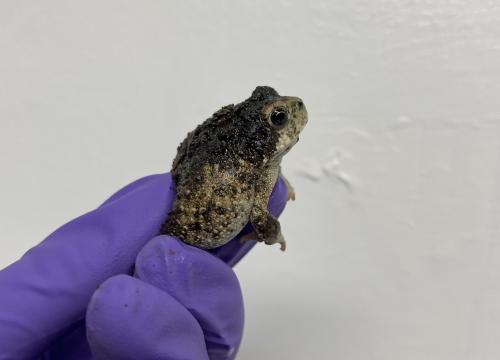
Step 2: Slippery When Wet
We will use a surfactant and a variety of wash tools to safely wash the oil and oiled debris from the toad’s skin. Q-tips, sponges, and syringes will be our tools of choice.
Submerging our toad in slick wash tub is not an option. Imagine trying to hold onto a soaped-up, squirmy toadlet! It’s tricky! We will hold them in one hand and use the wash tools with our other hand. We hold the toad over an empty tub so that if he slips from our grasp, he will land safely in the container. Fortunately, the oil begins to drip away from the toad’s skin as we delicately sponge on the dilute soapy water.
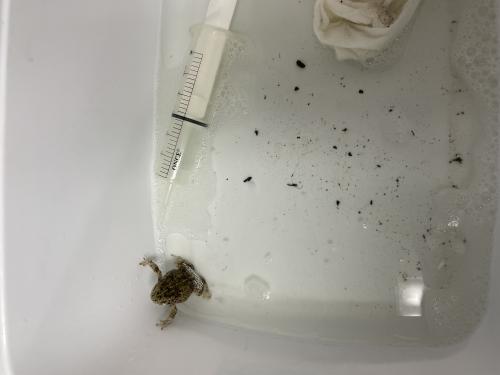
Step 3: Monitoring
Once cleaned, the toad is placed in a clean, toxin-free enclosure with a soft moist substrate, dark hiding places, and live insects for eating. If the toad is doing well post-wash and meets release criteria, he can head back home as soon as his environment has been cleaned up.
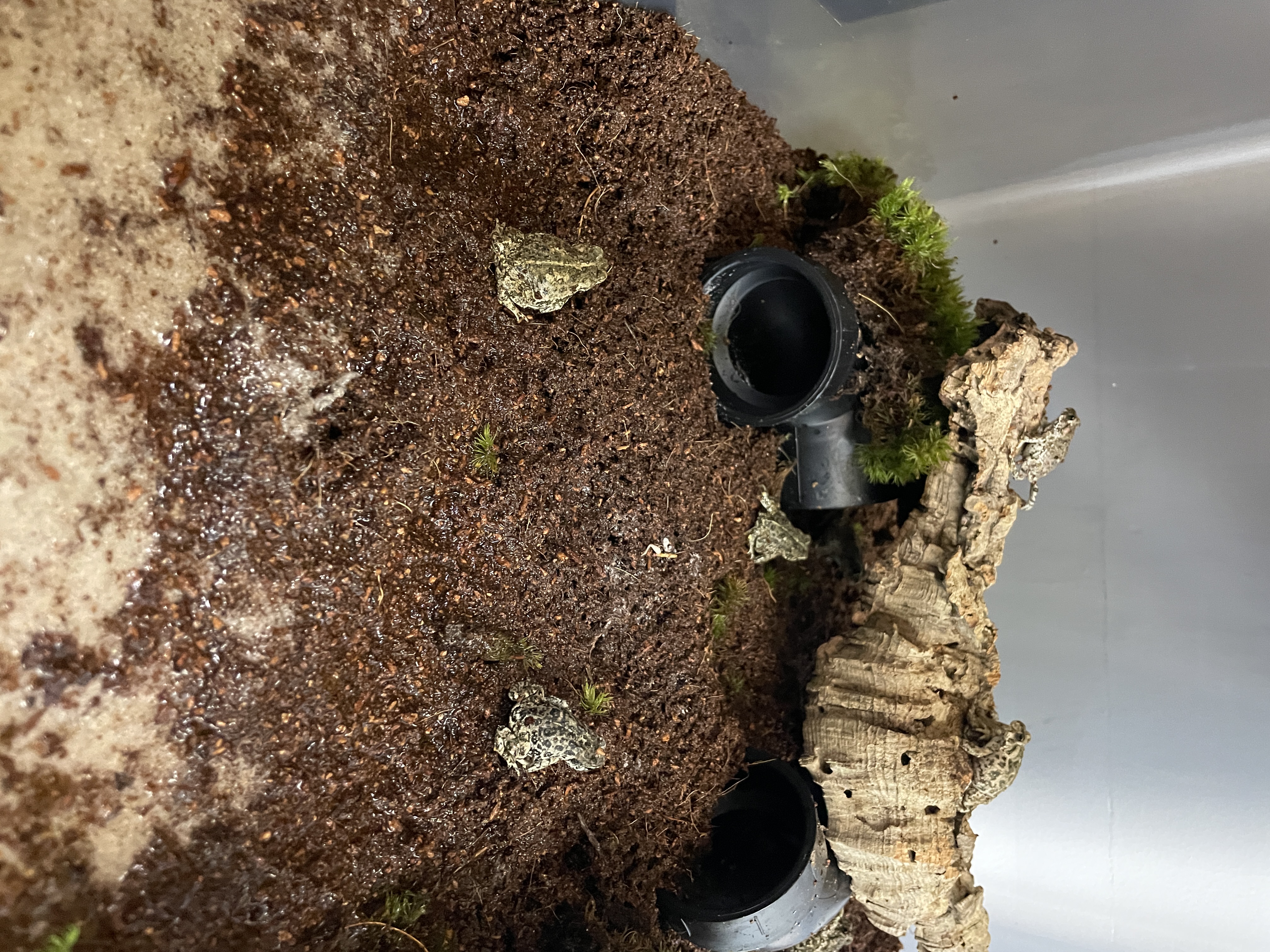
Step 4: Release
If the toad is doing well post-wash and meets release criteria, he can head back home as soon as his environment has been cleaned up. This may be as early as the day after wash, or it could be a few weeks if cleanup of his habitat takes longer. Because toads have such a small home range, our team makes an effort to return them very near where they were found.
Meet the Grebe
Grebes are obligate waterbirds - divers by trade, waterproof by design. Their legs are designed for swimming and diving, not walking on land. Their feathers are like a wetsuit: meticulously preened to trap air and keep them buoyant and warm. Oil ruins that waterproofing, fast.
Oiled Grebe Rehab Overview:
Step 1: Examine and Stabilize
A cold, stressed grebe loses waterproofing and body heat. They need warmth, fluids, nutrition, and rest before washing. After a thorough exam, caregivers will initiate a plan to stabilize the bird, this typically takes 48 hours.
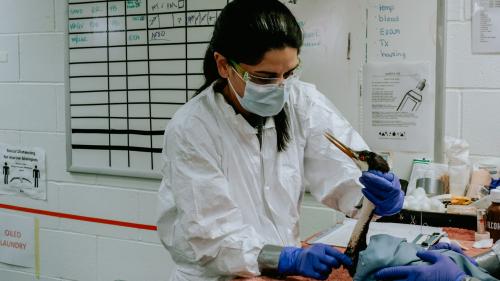
Step 2: Bath Time!
When stable, it’s wash time! Birds like grebes are washed with diluted surfactant in a series of warm water tubs. The washer gently scrubs the oil from their necks and faces with sponges and Q-tips. Their body is held underwater to keep them warm and to let the soapy water work. The washer agitates the water around the body, under the wings, and between feathers until all traces of oil have been removed. Then the bird is meticulously rinsed with water until all traces of soap are flushed away.
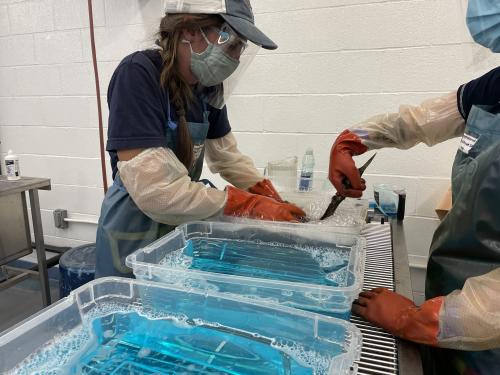
Step 3: Drying & Preening
Post-wash, grebes are placed in warm pens with dryers and then monitored as they preen themselves back to waterproof glory. Once dry, caregivers will gradually transition the bird back to its fully aquatic lifestyle. Because the bird still has preening to do, this process can take several days.

Step 4: Pool School
Once waterproof, grebes need a clean, filtered pool setup to swim, dive, and rebuild stamina. If they cannot attain and maintain waterproofing? Back to drying and preening support they go. If they will not accept whole fish on their own, caregivers will provide liquid nutrition to keep their strength up during their recovery.

Step 5: Release
Release exams begin once the grebe has achieved perfect waterproofing and any other injuries or concerns have resolved. This typically occurs at least 10-14 days from rescue. The team will carefully choose an ideal release location. Grebes must be placed in a body of water for release as they cannot takeoff from land. Because grebes often travel many miles in a single day, they can be released in suitable habitat in the general area of where they were found.
Wild Facts:
When their skin is irritated, like in the wash process for example, toad skin secretes a chemical that smells like peanut butter!
Grebes are an easily stressed rehab patient. They are well known for vocalizing their displeasure with a piercing shriek. The Oiled Wildlife Care Network even named one of its response boats “The Screaming Grebe”!
Why This Matters
Rehabilitating oiled wildlife isn’t a one-size-fits-all job. It requires a deep understanding of each species’ biology, behavior, and natural habitat. The same oil that tars a grebe’s feathers can poison a toad through its skin. And helping them recover takes patience, skill, and species-specific care. Whether it hops or dives, every wild life matters. And behind every rehab success story, slimy or feathery, is a team that adapts, innovates, and scrubs with compassion.
